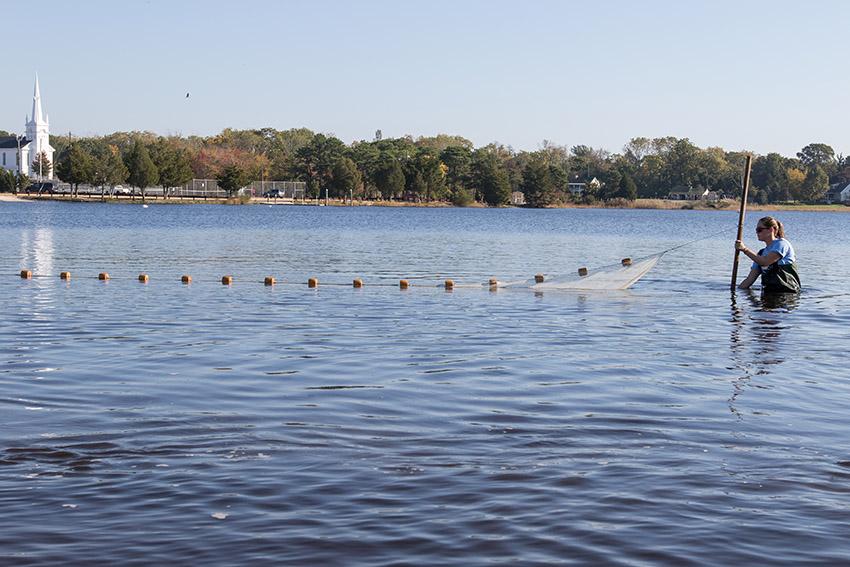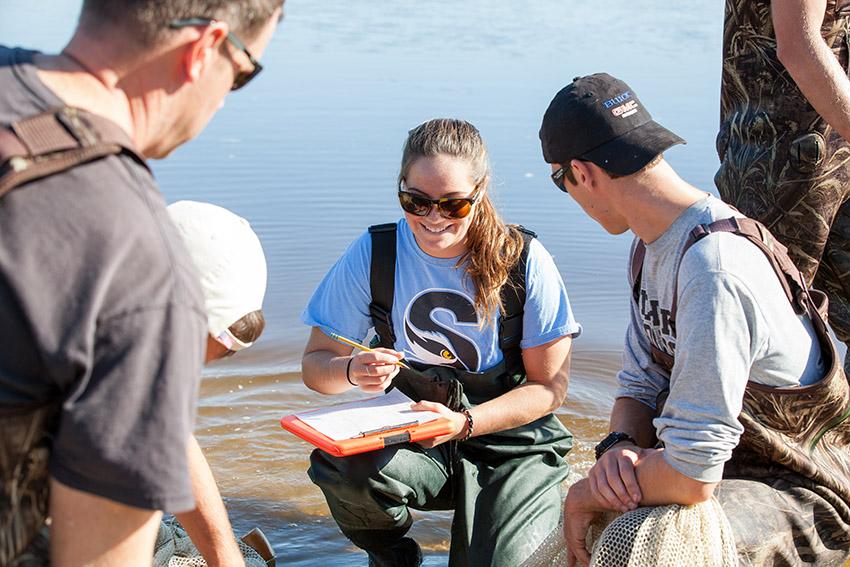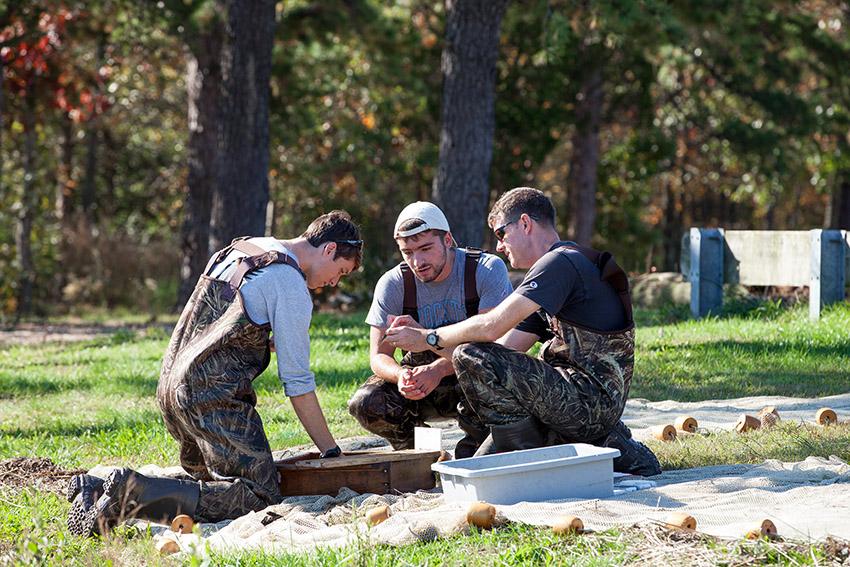What's in YOUR Estuary
Summer 2018 Issue

(Bottom to Top): ŇůĐÔĘÓƵ Marine Science faculty member Dr. Mark Sullivan, Joseph
Citro, Professional Science Master's in Environmental Science graduate student, Marine Field
Station technician David Ambrose, Marine Science '14, undergraduate student Caroline
Bowman, Biology and Teacher Education student, and ŇůĐÔĘÓƵ alumnus
Sean Lynch, Marine Science ’17, sort a seine net catch in Port Republic, N.J. (Photo
credit: Susan Allen).
Estuaries (“where the river meets the sea…”) provide more than 30,000 km2 of nursery habitat for over two-thirds of the economically important fish species along the East Coast of the United States. A large percentage of these species are “estuarine-dependent” - they reproduce in the ocean/lower estuary/river, enter estuaries as very young fish, survive to become juveniles, and (hopefully) join the adult population. As a result, the composition, size and numbers of young fish in estuaries function as important indicators of population health, particularly if standardized data with broad coverage are available. The Mullica River-Great Bay (MRGB) estuary is one such system on the East Coast that provides a wide variety of habitats for estuarine-dependent species. Summer flounder (“fluke”), winter flounder, bluefish, black sea bass, and tautog are notable economically and ecologically important species that share critical links to New Jersey estuaries during early and, in many cases, adult life.
ŇůĐÔĘÓƵ’s Nacote Creek Marine Field Station is located 15 minutes from Galloway campus and has supported undergraduate course-based fish sampling for over two decades, primarily using seine nets deployed from land or vessel and hauled back to shore by students.
This work was recently synthesized in a Marine Science Program Distinction project by Caroline Schkeeper, Marine Science ’15, spanning eight-plus years, 100 seine hauls and 19,131 individual fish. Overall, these collections afforded students hands-on experience and training, but did not always connect the data with fishery managers. In 2016, the New Jersey Department of Environmental Protection generously funded a three-year project that continues this tradition of immersive field experiences at ŇůĐÔĘÓƵ, but also aims to make the data more standardized, multi-seasonal and available to fishery managers.

A cryptic juvenile hogchoker – a type of flatfish easily mistaken for leaf litter - sampled with a seine net in Port Republic, N.J. (Photo credit: Susan Allen).
Since May 2016, twice-per-month seine collections from May–November (monthly from November–April) have been conducted in the MRGB from Little Egg Inlet to upriver beyond the Garden State Parkway bridge. In addition, a local commercial waterman, Newt Sterling, has been engaged to collect monthly fyke (a long, stationary, cylindrical net) data for highly migratory species (striped bass, river herring) in Great Bay during the winter and spring months. By the close of year one, 238 samples were completed across the two gear types collecting 90,424 individual fish from 66 different species. To date, over 100 students have gained direct hands-on experience from this funded project through independent study work, volunteer opportunities, four undergraduate courses (Introduction to Marine Biology, Fisheries Science and Management, Introduction to Ichthyology, and New Jersey Field Ichthyology) as well as programs for high school students ŇůĐÔĘÓƵ Science Enrichment Academy - (SEAS).

seining review

seining review

seining review

seining review

seining review
A key take-home message from this project for the undergraduate students is simply - take the time to “look.” In the rush to test complicated hypotheses, sometimes students (and faculty alike) overlook the critical first step in the scientific method – record observations. Along these lines, project scientists have learned that members of the commercial fishing community often have the most complete data sets available, collected over a lifetime of observations. Thus, data from this project is helping to answer the question “What’s in YOUR estuary?”, while providing key observations from multiple sources that may help propose and answer interesting questions in the future.
Special thanks to Gary Buchanan, Bruce Ruppel, David Ambrose, Elizabeth Zimmermann, Nathan Robinson, Colby Capri, Marie Jelinski, Rutgers University Marine Field Station staff.


